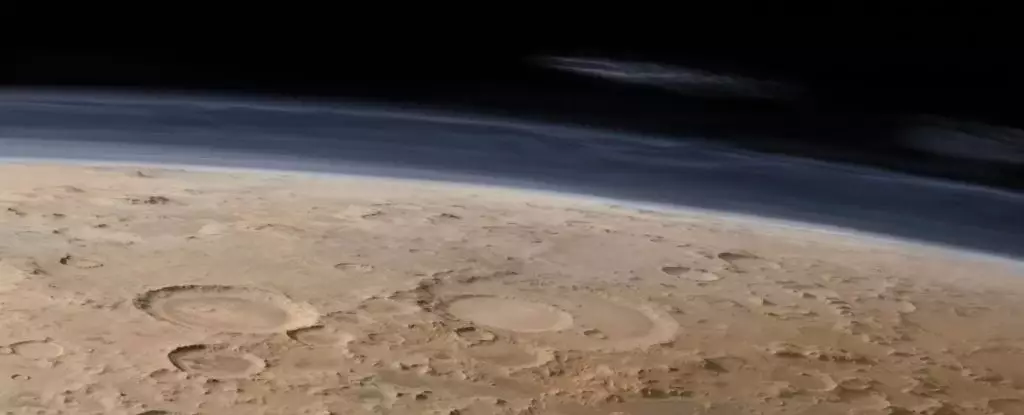In a monumental breakthrough, researchers have unveiled a vital piece of the puzzling process behind the degradation of Mars’ atmosphere. Led by esteemed planetary scientist Shannon Curry from the University of Colorado Boulder, a dedicated team has successfully documented atmospheric sputtering—a phenomenon long theorized but scarcely observed. Their findings, drawn from over nine years of meticulous satellite data, illuminate the mechanisms that have stripped Mars of not only its atmosphere but potentially its water as well. This discovery marks a significant step towards comprehending how Mars transitioned from a once-bustling planetary environment to the cold desert we observe today.
The Mechanisms of Atmospheric Loss
At the heart of this research lies the concept of atmospheric sputtering, suspected to be a major player in the atmospheric history of Mars, particularly during the Sun’s more volatile early years. This process occurs when ions, propelled by the solar wind’s electric field, collide with Mars’ atmosphere, which lacks a protective magnetic shield. This interaction can be likened to a meteor shower, where pebbles impact a surface, imparting energy that ejects surrounding materials into space. Some of the molecules and atoms in the Martian atmosphere, after absorbing sufficient energy, can reach and surpass escape velocity, leading them into the vastness of space—a reminder of how fragile planetary atmospheres can be.
What elevates this discovery is the methodical approach undertaken by the researchers. Observing atmospheric sputtering with precision demands specific conditions: researchers needed simultaneous readings of both the ions colliding with the atmosphere and the electric fields capable of accelerating them. It was only by leveraging the capabilities of NASA’s MAVEN spacecraft, which has been circulating Mars since September 2014, that the team could gather the necessary data.
Groundbreaking Findings on Argon Density
The pivotal piece of evidence from this research surfaced in the fluctuation of argon densities at various altitudes above the Martian surface. More specifically, it became evident that argon concentrations were not uniform; rather, they significantly varied at heights above 350 kilometers (217 miles), suggesting active sputtering was indeed taking place. This assertion is bolstered by the observation that lighter isotopes of argon were being preferentially lost, leading to a residue of heavier isotopes, which could only be rationally explained through the sputtering process.
Observational studies tied to a solar storm that impacted Mars in January 2016 provide further validation for the researchers’ claims. During this period, there was a marked increase in evidence pointing to atmospheric sputtering, showcasing the dynamic interactions between solar activity and Mars’ tenuous atmosphere. The researchers discovered that the rates of sputtering were over four times greater than previously anticipated, challenging earlier models of atmospheric loss on the Red Planet and offering new perspectives on the historical climatic conditions.
Implications for Martian Habitability
The implications of these findings extend beyond mere academic curiosity; they forge a critical link to potential habitability on Mars. Understanding the dynamics of atmospheric erosion is not only crucial for interpreting the planet’s past but serves as a foundation for future exploration. If Mars was once capable of holding water and harboring life, comprehending the processes that stripped it of such essential elements could be key to astrobiological studies and even human colonization endeavors.
As we delve deeper into the mysteries of Mars, the research conducted by Curry and her team serves as a transformative lens through which we can view our planetary neighbor. It highlights the interconnectedness of solar activity, atmospheric dynamics, and planetary evolution—elements that could hold the answers to one of humanity’s most profound questions: Are we alone in the universe? The discoveries made by these unwavering scientists remind us of the vast unknowns that still inhabit our cosmic backyard, inviting us to continue our quest for knowledge and exploration.

